Star Trek Glossary: Every Starfleet Rank And Job Explained
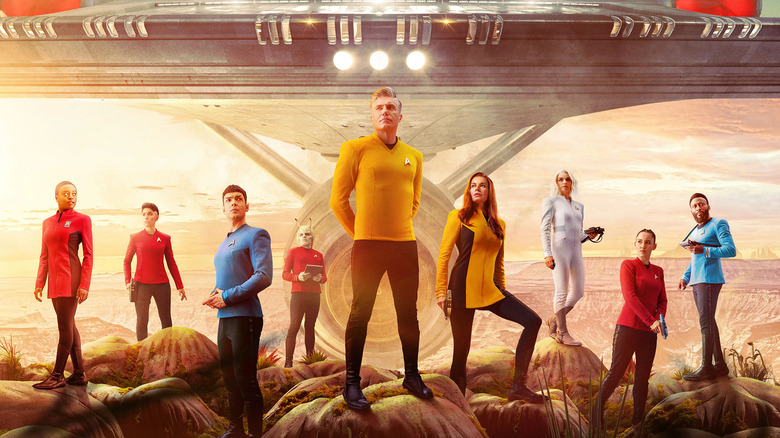
"Star Trek" is, first and foremost, a workplace drama . It just so happens that the workplace is a high-tech, faster-than-light space vessel exploring distant regions of the galaxy. Working on a starship is a fine job indeed. Many classic "Star Trek" episodes deal with rank, the chain of command, and how certain captains employ their unique managerial styles to inspire the officers beneath them. The main characters in "Star Trek" mostly all belong to Starfleet, a military-like organization that uses naval ranks and nautical vocabulary to describe a starship's operations.
To give the shows a touch of realism, the makers of "Star Trek" have (mostly) been careful to point out that a starship is a massively complex machine that requires hundreds of people to operate correctly. Additionally, the day-to-day logistics of running a starship require departments within departments, each one run by its own miniature team of officers, and with each team making sure that every small piece of equipment is operating at peak efficiency. Ideally, a starship can't be flown by a single person or even a scant bridge crew (I will happily ignore, however, the times that it was; those times don't count).
Trekkies take a great deal of delight in tracing and detailing the various ranks and departments on board an average Starfleet vessel, mostly because it makes it easier to imagine actually working there someday. Yes, we know it's fictional, but so much detail had gone into rank, operation, and propriety on "Star Trek" that many viewers can picture where they might be able to practically work, what their rank might be, and whom they would answer to.
For the laypeople reading, however, here is a brief rundown on the ranks, jobs, and positions one might encounter in "Star Trek."

The Starfleet ranks calling the shots
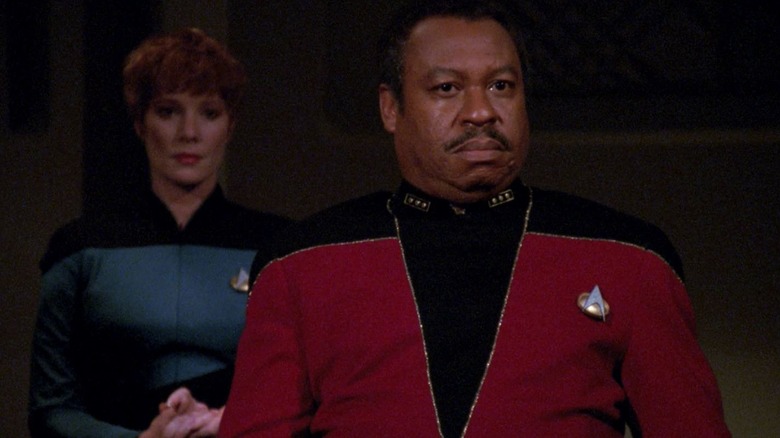
Here is the central chain of command withing Starfleet, listed from top to bottom.
At the top of Starfleet are the admirals. Admirals typically serve in official positions and don't usually command starships. They are essentially the management that starship captains have to report back to. The head of Starfleet — Commander in Chief — bears the top rank of Fleet Admiral .
Below Fleet Admirals are just regular Admirals , which are plentiful in "Star Trek."
Vice Admirals serve below them (the officer picture above bears the rank pips of a Vice Admiral), followed by Rear Admirals .
A lesson: don't trust Admirals .
We don't see too many Commodores on "Star Trek," but they are the rank in between Captain and Admiral.
Below the Commodores are Captains , who, as we all know, tend to command starships. The Captains can give orders to any officers on their ship. Captains tend to be the central characters of "Star Trek" shows, so we already know James T. Kirk, Jean-Luc Picard, Benjamin Sisko (Avery Brooks), Kathryn Janeway (Kate Mulgrew), Jonathan Archer (Scott Bakula), and, most recently Christopher Pike (Anson Mount) on "Strange New Worlds."
Directly below the Captains are Commanders . A ship's first officer is a Commander, as are a few other key figures on a ship like a Chief Medical Officer or a Counselor. Riker (Jonathan Frakes) and Spock (Leonard Nimoy) are Commanders.
Immediately below the Commanders are Lieutenant Commanders , who also tend to serve notable executive functions on a starship. People of lower ranks can indeed become members of a ship's senior staff (the "main" officers on a ship that spend the most amount of time on the bridge), but Lieutenant Commanders tend to be the lowest-ranking officers who still command their own departments on a ship.
The Starfleet ranks taking the orders
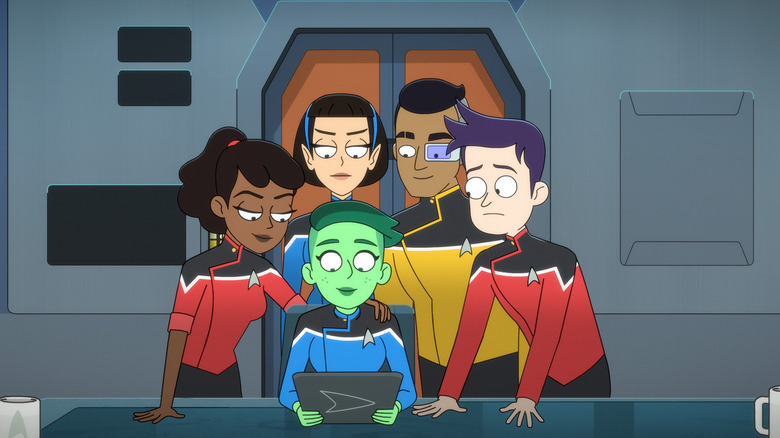
One might note that Starfleet officers wear color-coded uniforms. The colors represent the general departments in which they work. In the original series, officers on the command track wore gold uniforms, medical officers and science officers wore blue, and red was reserved for those who worked in engineering, security, or operations. In the era of "Star Trek: The Next Generation," red and gold uniforms switched .
There must, of course, be grunt workers and mid-managers below the department heads listed above, and that's where the lower-ranking, junior officers come in.
Mere Lieutenants are immediately below Lieutenant Commanders. They may lead special projects or work on the bridge, but they take more orders than they give.
Below them are officers ranked Lieutenant (Junior Grade) , followed by Ensigns . To become a Starfleet officer, one must spend at least four years at Starfleet Academy. Graduates are typically promoted to the rank of Ensign and given their first assignments immediately. "Star Trek: Lower Decks" is all about Ensigns and Junior Grade Lieutenants like Brad Boimler (Jack Quaid) and Beckett Mariner (Tawny Newsome).
Not every officer on a ship graduates from the Academy, however. One can enlist in Starfleet and become a Petty Officer. These people have their own subset of operational concerns, usually zeroed in on specific areas of the ship like the transporters, food services, or basic security.
The Petty Officers have their own ranking system, starting — highest first — with Master Chief , then Senior Chief , followed by Chief , then Petty Officer First Class , and finally Petty Officer Second Class . Yeomans are petty officers who take care of paperwork for officers. Chief Miles O'Brien (Colm Meany) was a transporter expert.
Other specialists — historians, botanists, etc. — can be Petty Officers.
Back at Starfleet Academy, meanwhile, Cadets have their own ranking by year. Freshmen are 4th Class , sophomores are 3rd Class , juniors are 2nd Class , and seniors are 1st Class . For a large portion of "Star Trek: The Next Generation," Wesley Crusher (Wil Wheaton) was a cadet. This was after he already held a position as Acting Ensign , a provisional rank given in the field.
Starfleet Command and Bridge positions
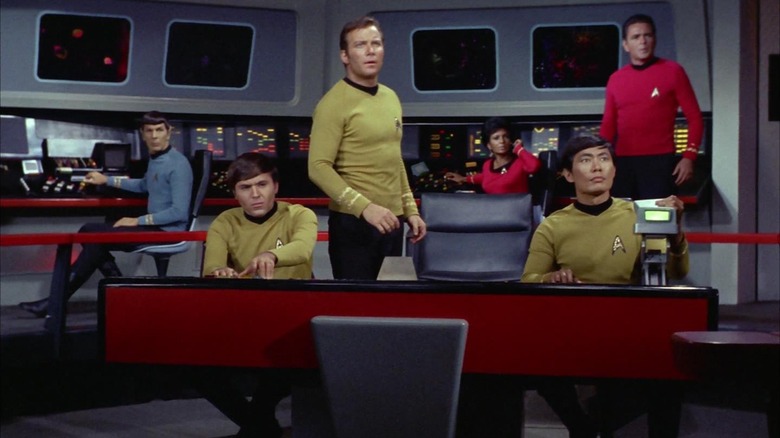
One might have noticed watching the original "Star Trek" that Lieutenant Uhura (Nichelle Nichols) always sits at the same station on the bridge of the Enterprise, as does Sulu (George Takei), Chekov (Walter Koenig) , and Spock (Leonard Nimoy). This is because they have been assigned one of the many official bridge positions on a Starfleet vessel. The positions must be filled, regardless of an officer's rank.
The Commanding Officer on a starship is usually the captain. The (non-capitalist) buck stops with them.
Answering directly to the captain, and communicating most directly with the crew is the Executive Officer or the First Officer, usually bearing the rank of commander.
Third in command is the Second Officer , who can also hold other operational positions; on "Star Trek: Voyager," for instance, Tuvok (Tim Russ) serves as both Second Officer and Security Chief.
Sitting in front of the captain and piloting the ship are the Helmsman at conn to the captain's right and the Operations Officer at Ops to the captain's left.
The Helmsman may also be officially the ship's Navigation Officer , an expert in spatial physics and stellar cartography. Expert pilots likely sit at the conn, but also may be selected to pilot smaller, supporting crafts like shuttles or runabouts. These officers are sometimes appointed the Chief of Flight Control . Example: Tom Paris (Robert Duncan McNeill) on "Voyager."
In charge of hailing vessels, translating, and sending coded messages is the Communications Officer . On the original series, Uhura was a dedicated Communications Officer, while on "Next Generation" and beyond, other officers took on communications as part of their jobs. Worf (Michael Dorn) served as both Communications Officer and Security Chief.
Starfleet Science and Medical positions
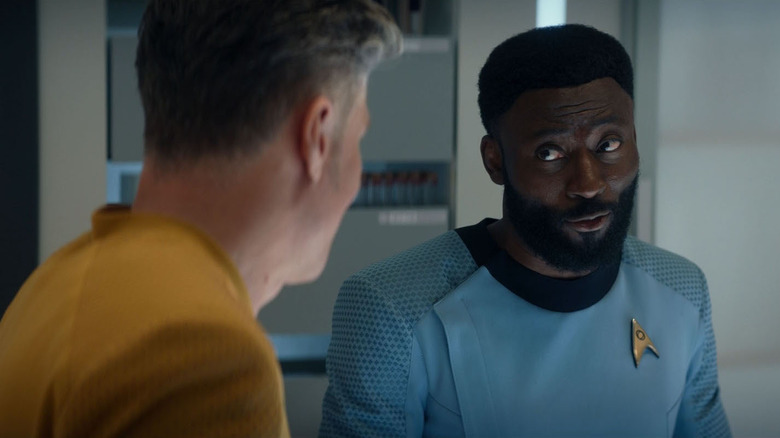
Most Starfleet vessels are devoted to research and explorations, and there are multiple departments — and corresponding commanding officers — tasked with overseeing the details.
A ship's Science Officer is in charge of research and serves as coordinator of all the ship's specialized science fields. Science Officers must have a head for numbers and objective detail. On the original "Star Trek," Spock served as the Science Officer and the Executive Officer. On "Voyager," Seven of Nine (Jeri Ryan) served as a Science Officer, and she only held the rank of Master Chief Petty Officer.
A ship's Chief Operations Officer is like the Science Officer but oversees the technical aspects of the ship, including engineering, the engines, the life support, and other vital systems. Like the Science Officer, it helps that the Chief Ops Officer has a mind for technical details. On "Next Generation," Data served as Chief of Ops and worked closely with the Chief Engineer (which we'll get to in a minute).
Also, because a ship is full of biological organisms, it's important that their health be maintained. Every ship has a medical department overseen by an indispensable Chief Medical Officer , the only officer on the ship who can give orders to the Captain. Each medical department also has a network of experts and nurses, including the Head Nurse like Nurse Chapel (Jess Bush) on "Strange New Worlds" or Nurse Ogawa (Patti Yasutake) on "Next Generation." There may sometimes be a Head of Surgery , or perhaps a dedicated pathologist or epidemiologist. For the most part, though, the Chief Medical Officer takes care of many of these things themselves.
Starfleet Security and Combat Positions
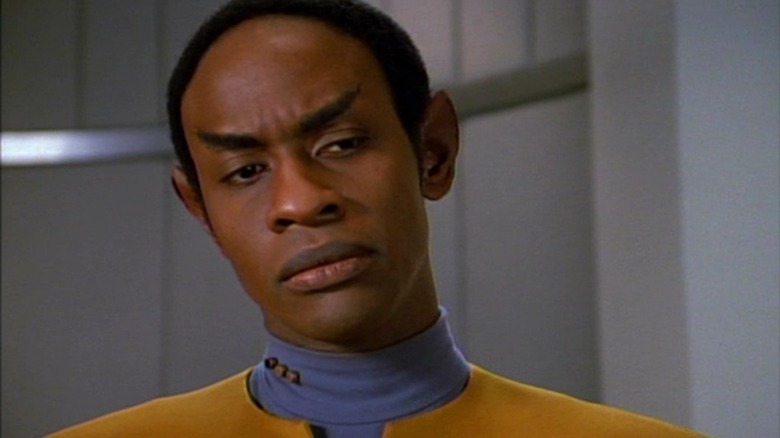
Starfleet vessels are dedicated to peace, diplomacy, and study, but there are still violent, antagonistic species in the galaxy, and Starfleet isn't always on the best terms with them. As such, each Starfleet vessel requires experts in on-ship security, ship-to-ship tactics, and weapons operations.
Every ship will have a Chief of Security , responsible for confronting intruders, enforcing the on-ship laws, and perhaps throwing ruffians into the ship's brig. The Chief Security Officer often also serves as the Strategic Operations Officer , who sits at the tactical position and fires weapons at the captain's command. Worf and Tuvok were in charge of these positions on their respective shows. They tend to go on the most away missions, keeping the other officers safe. They are the only officers on the ship who are always armed. Odo (René Auberjonois) served as chief of security on "Star Trek: Deep Space Nine," but he wasn't a Starfleet officer. He worked for the Bajoran government, and they implemented a different military system altogether.
As mentioned above, basic security officers are not Starfleet Academy graduates, and typically serve as Petty Officers, answering only to the Chief of Security.
Starfleet Engineering and Technology Positions
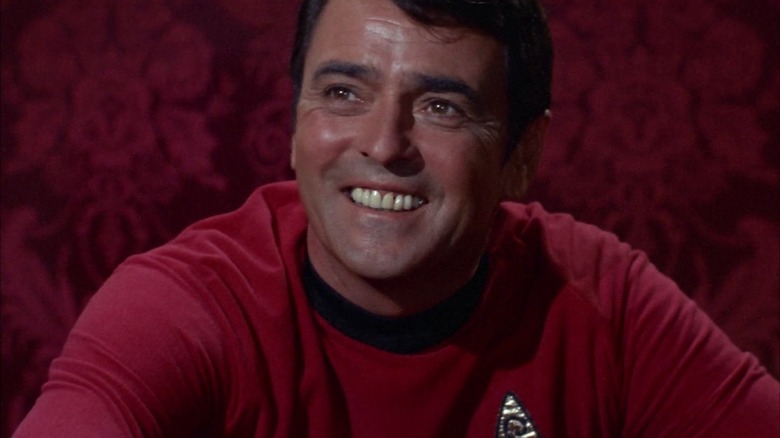
As mentioned above, the Chief Operations Officer coordinates the technical aspects of the ship, but the hands-on officer in charge of a starship's massive engine room is the Chief Engineer , the one who actually makes repairs and oversees all of the other repairmen. No ship can function without a Chief Engineer overseeing all of the other engineers on the ship, busily readjusting and calibrating the physical machinery used to make the Enterprise go.
The Chief Engineer might oversee technical experts, such as Warp Engineers (who oversee the faster-than-light engines), Impulse Engineers (who oversee the sub-light engines), those who oversee shields, transporters, electrics, life support, food replicators, lighting, gravity, or just about anything with a technical component. Thanks to "Next Generation," Trekkies know all about a dedicated Transporter Chief . There will also be an officer dedicated to Environmental Controls (especially important if your ship hosts species from hotter or colder worlds than Earth), and one devoted to Computer Operations , which might be the "Star Trek" equivalent of the I.T. repair guy. Heck, one might even find an engineer devoted to Holography systems, an expert in repairing holodecks.
"Star Trek" doesn't feature a lot of tool belts, but if it did, the Engineering department would wear them.
Kudos to LeVar Burton, who played Chief Engineer Geordi La Forge on "Next Generation." More than any other actor, he needed to memorize Trek's well-worn, multisyllabic techno-jargon. He talked a lot about warp fields, phase coils, plasma inducers, dilithium crystals, and every other high-tech widget on the Enterprise. And of course, everyone loved Scotty (James Doohan) from the original series.
Other Starfleet Positions
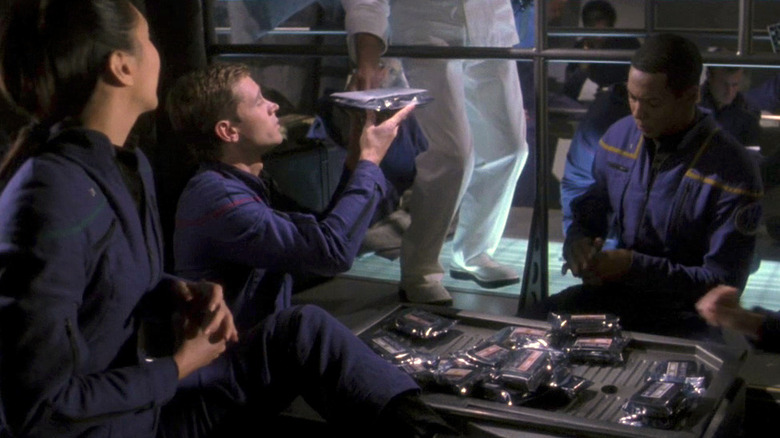
All the above departments are devoted to the vital function of a Starfleet vessel and the health of a vessel's crew. There are also various ancillary positions on a ship devoted to either comfort or just basic organization.
In the days before replicators , Starfleet vessels required Quartermasters or Supply Operations Officers to distribute physical objects to the crew. The Quartermasters would distribute emergency rations, spare uniforms, tricorders, and medical widgets. These would be the ones holding the stock clipboards. Despite "Star Trek" taking place in a technical utopia free of want, there are still only so many scanners and tricorders that can go around. Starships also require dedicated officers to oversee the cargo bays where shuttles and extra supplies are stored, hence a head of Cargo Operations .
Being the Waste Management Officer on a starship isn't too terrible, although one does have to clean out the poop filters occasionally. The poop is then salvaged, broken down, and converted into energy. That energy is used in a ship's food replicators. Yes, Starfleet officers eat their own poop . On "Lower Decks," Mariner is seen cleaning the waste filters out of the holodeck on the U.S.S. Cerritos. It's a gross job.
Not every ship has a specialized department for every situation, so other specialists may be called in as needed. During times of war or combat, for instance, a ship may be assigned an Intelligence Officer . This depends on the ship's current mission, of course. For diplomatic envoys, a ship may also be assigned a general Special Services officer to make sure negotiators and treaty signers are comfortable.
And, perhaps most importantly, many ships have a Counselor . On "Next Generation," Counselor Troi (Marina Sirtis) sits right on the bridge. On other ships, they have their own offices. They take care of a crew's overall mental health, serve as para-diplomats, and work with the Chief Medical Officer.
Which job would you want?
Screen Rant
Star trek’s ranks in order: how starfleet officers get promoted.

Your changes have been saved
Email is sent
Email has already been sent
Please verify your email address.
You’ve reached your account maximum for followed topics.
Star Trek: Every Captain of the Enterprise
Star trek: every version of the starship enterprise, i don't care if modern star trek breaks established canon.
- Starfleet officers begin their career at Starfleet Academy as cadets, studying various subjects and participating in extracurricular activities.
- After graduating from the Academy, officers start at the rank of Ensign and often have to perform less glamorous tasks on their assigned starship.
- Officers can work their way up the ranks, from Lieutenant Junior Grade to Commander, with each promotion bringing additional responsibilities and opportunities for command.
While many Starfleet hopefuls dream of one day having a command of their own, they must work their way diligently through Star Trek 's rank structure first. While it prides itself on exploration and diplomacy, Starfleet is a military organization at heart, and the command structure is reflective of this fact. The basic structure of Starfleet is very similar to that of the US and Royal Navy, with the high seas being swapped for the stars of deep space.
A promotion in Star Trek is usually a reward for exceptional performance , with many Starfleet officers being promoted in response to the valor and bravery demonstrated in the line of duty. Sometimes, a field promotion can also be handed to Starfleet officers in exceptional circumstances, such as with the Maquis officers in Star Trek: Voyager or Seven of Nine (Jeri Ryan) in Star Trek: Picard season 2. However, everyone's Starfleet story must begin somewhere and that first rung on the ladder usually comes in the form of an application and admittance to Starfleet Academy. Here are the various ranks in Starfleet, from the lowly Ensign to Admiral.
Star Trek has featured many starships named Enterprise. Along with Kirk and Picard, here's every Enterprise Captain from each movie and TV series.
Starfleet Academy hopefuls
Every Starfleet officer's career starts at Starfleet Academy, where prospective recruits enroll as cadets . Starfleet Cadets spend four to eight years at the Academy, depending on their program, where they study a variety of subjects. Courses on offer at Starfleet Academy include Warp Theory, Robotics, Quantum Chemistry, and the legendary Kobayashi Maru simulation . There's also a variety of extracurricular activities on offer at the Academy that also provide formative experiences. Previous Cadets like Captain Kathryn Janeway (Kate Mulgrew) have helped Starfleet Academy groundskeeper Boothby (Ray Walston) tend to the roses, while the Rigel Cup was won by the Nova Squadron shortly before the tragic accident that left a lasting impression on Wesley Crusher (Wil Wheaton).
Starfleet Academy played a big role in J.J. Abrams' Star Trek (2009), and the upcoming Star Trek: Starfleet Academy series is the first time a Star Trek show will be set at the school.
Lowest of the Lower Deckers
After graduating from Starfleet Academy, a Cadet is given their first assignment to a starship as an Ensign. This is the lowest position aboard, which usually means that they have to do the less glamorous jobs aboard their assigned starship. Star Trek: Lower Decks has depicted jobs as menial as holodeck filter duty, and the cataloging of various weird and wonderful alien artifacts. Not every Ensign is a lower-decker, however. Ensign Nyota Uhura (Celia Rose Gooding) is key to keeping the USS Enterprise connected in Star Trek: Strange New Worlds and Ensign Harry Kim (Garrett Wang) was integral in working on various solutions to returning the USS Voyager home to the Alpha Quadrant.
8 Lieutenant Junior Grade
Congrats, it's your first command rank.
Lieutenant junior grade is the next step-up for an Ensign , denoted by the additional black and gold pip on the collar. Also known as a Lieutenant JG, this rank allows for limited command responsibilities. Notable junior grade lieutenants include Reginald Barclay (Dwight Schultz), a fiercely intelligent but painfully shy engineer. Dr. Julian Bashir (Alexander Siddig) was also a JG, and his early arrogance suggested he was ostentatiously choosing to slum it as a lieutenant junior grade due to his desire to study frontier medicine. When the Lower Deckers of the USS Cerritos were promoted in Star Trek: Lower Decks season 4 , they became the most notable Lieutenant Junior Grades in modern Star Trek .
7 Lieutenant
Welcome to starfleet middle management.
After earning a promotion to Lieutenant, the black and gold pip of the JG becomes fully gold, denoting their additional responsibilities. Many Star Trek lieutenants are responsible for various departments aboard their assigned starship. For example, Lieutenant La'an Noonien-Singh (Christina Chong) and Lieutenant Worf (Michael Dorn) were in charge of security on the USS Enterprise and Enterprise-D, respectively, while starship helmsmen like Lt. Tom Paris (Robert Duncan McNeill) and Lt. Erica Ortegas (Melissa Navia) are ranked Lieutenants.
In both Star Trek: The Next Generation and Star Trek: Deep Space Nine , the Lieutenant was the lowest rank in the senior staff, but still allowed them to provide valuable insight and input into any issues facing the crew. Star Trek: Voyager 's Ensign Harry Kim (Garrett Wang) bucked this trend by being privy to various command meetings.
The Federation flagship, the USS Enterprise, has a long, fabled history, and each version of the classic Star Trek spacecraft has its own unique look.
6 Lieutenant Commander
Now you're running your own starfleet department..
Lieutenant Commanders were Heads of Departments or Executive Officers aboard their assigned starships, referred to as " Commander " by those serving under them or their senior officers. Lieutenant Commanders had an additional black pip added to their collar which would become gold on their next promotion. In Star Trek 's 23rd century, the second-in-command on the USS Enterprise was Lieutenant Commander Una Chin-Riley (Rebecca Romijn), who was later succeeded by Lt. Commander Spock (Leonard Nimoy). However, this had changed by the time of Star Trek: The Next Generation , with Starfleet Lieutenant Commanders instead serving as Number One on smaller ships, as Lt. Commander Benjamin Sisko (Avery Brooks) did on the USS Saratoga.
5 Commander
Welcome aboard, number one.
Commander is the last step on the Starfleet career ladder to the captain's chair and one of the most senior ranks on any starship as they deputized for the ship's Captain. Commanders who are starship First Officers often receive the nickname "Number One." In Star Trek: Deep Space Nine , Commander was the most senior rank until season 3, when Commander Benjamin Sisko (Avery Brooks) finally received his promotion to Captain.
Despite Star Trek 's fascination with its Captain characters, Commander was never a barrier to leading a show, as proved by both Sisko and Commander Michael Burnham (Sonequa Martin-Green) in Star Trek: Discovery . The most notable Commander was William T. Riker (Jonathan Frakes), who felt like second-in-command of the Federation flagship was more fulfilling than being Captain of a less-celebrated starship.
The rank most Starfleet Officers dream of
Captain of a starship is what many Starfleet officers dream of , and is given to those in command of their own starships. They had enormous responsibilities for the safety of their crew and to Starfleet's Prime Directive. The Captain's rank was also applied to various other positions, such as Captain of Engineering, the position held by Montgomery Scott (James Doohan) in Star Trek III: The Search for Spock .
Generally, the position of Captain was the most senior role that still had the relative freedom of deep space exploration and adventure. So much so that Captain James T. Kirk (William Shatner) warned Captain Jean-Luc Picard (Patrick Stewart) against accepting a promotion to Admiral in Star Trek Generations . It was a warning that Picard would later ignore, much to his regret.
3 Vice Admiral
You've achieved flag officer status.
Vice Admiral is the rank between Captain and Starfleet Admiral, denoted by three pips on a black and gold bar badge on the collar. The most notable holder of this position is Vice Admiral Kathryn Janeway (Kate Mulgrew) who received her promotion after commanding the USS Voyager through the Delta Quadrant. However, Janeway still had to answer to someone, as seen in her conflict with Admiral Edward Jellico (Ronny Cox) in Star Trek: Prodigy season 1. The earliest notable Vice Admiral was the 22nd Century's Maxwell Forrest (Vaughn Armstrong) who was in constant contact with Captain Jonathan Archer (Scott Bakula) in Star Trek: Enterprise , often being the mediator between Starfleet and the Vulcans in the early days of deep space exploration.
In Star Trek: The Motion Picture , James T. Kirk held the rank of Rear Admiral and was Chief of Starfleet Operations.
Try not to become a Badmiral
Admiral is the highest position in the Royal Navy, however, Starfleet does have a higher position of Fleet Admiral, held by the doomed Elizabeth Shelby (Elizabeth Dennehy) in Star Trek: Picard season 3. A Starfleet Admiral is responsible for entire divisions of Starfleet. Notable Starfleet Admirals include Robert April (Adrian Holmes) who oversees his former command, the USS Enterprise, and Owen Paris (Richard Herd) who oversaw the Pathfinder Project that established long-range communications with the USS Voyager in the Delta Quadrant. Jean-Luc Picard later became Admiral of the Romulan rescue armada in response to the impending supernova but resigned his commission in protest at the Federation abandoning the evacuation, and their ideals.
Many Starfleet Admirals go insane or become villains for some reason.
1 Other Notable Starfleet Ranks
From specialist to warrant officer to commodore.
There are also sideways promotions available to Starfleet officers , such as Fleet Captain and Commodore. Captain Christopher Pike (Anson Mount) got his Fleet Captain promotion in Star Trek: Strange New Worlds season 2 while overseeing work on the Deuterium refinery. It was a temporary promotion that allowed Pike to be in overall charge of both the USS Enterprise and USS Farragut for the duration of the refinery project. Similarly, Starfleet Commodores also have overall responsibility for multiple starships, with Geordi La Forge reaching this position with his promotion to curator of the Athan Prime Fleet Museum in Star Trek: Picard season 3.
In Star Trek: Picard season 1, Commodore Oh (Tamlyn Tomita) was Chief of Starfleet Security before she exposed herself as a deep cover Romulan agent named General Nedar.
There are also the lower-ranked non-commissioned officer roles or NCOs. Traditionally, NCOs wouldn't enter a military organization via conventional means like training academies and instead worked their way up through the ranks. The most notable Star Trek NCO is Chief Miles O'Brien (Colm Meaney) who was put in charge of engineering on Deep Space Nine and was reportedly the most important man in Starfleet history. Another notable NCO position is the Warrant Officer, a role granted to Dal R'El (Brett Gray) and the former crew of the USS Protostar by Vice Admiral Janeway in Star Trek: Prodigy season 1's finale . Michael Burnham also held the unranked position of Specialist when she joined the USS Discovery after she was released from a Federation penal colony in Star Trek: Discovery season 1.
Every Star Trek series except Star Trek: Prodigy is available to stream on Paramount+.
Star Trek: Prodigy i s available to stream on Netflix.

- Interesting Characters
- The Best Series and Movies, Ranked
- Original Series Trivia
- 'Make It So' - Picard
- Fun Facts About the New Film Series
- Exasperated Picard
- The Greatest Star Trek Insults
- Secrets from the Wardrobe Dept.
- Store-Bought Items Used as Props
- Accidents with the Transporter
- Celebrating Spock and Bones McCoy
- Every 'Star Trek' Captain, Ranked By True Trekkies
- The Best ‘Star Trek’ Villains Who Give Starflee...
- Episodes That Get You Hooked
- Times Scotty Saved the Day
List of Star Trek Characters
Embark on an intriguing exploration of the beloved Star Trek constellation of characters, seamlessly woven in our specially curated list. From Captain Kirk's indomitable spirit to Spock's logical brilliance, absorb the enthralling essence of these timeless personalities from one of science fiction's most enduring enterprises.
Diving beyond the surface, our list traces the intricate pathways of each character's narrative journey. Grasp the transformational arcs and pivotal roles of these fascinating individuals who have defied space and time and entered the panorama of popular culture.
Our meticulous, well-researched explorations are founded on extensive knowledge providing a broad-view perspective of their strengths, weaknesses, and alliances, as well as the antagonistic relationships within the Starfleet universe. Immensely engaging, this list will satisfy the curiosity of those seeking depth and perspective into their favorite characters while tracing the cherished legacy of Star Trek.
However, this engaging exploration isn’t just a monologue. We want our opinion. Are you fascinated by the stoicism of Jean-Luc Picard or intrigued by the duality of Data? Here, your opinion matters. Cast your vote for your favorite character and become a part of an enriching, collective conversation on this beloved franchise.
Commence your celestial journey with us as you dig deeper into the intricacies and marvels of the Star Trek universe. Participate, discover, and contribute to the shared passion for one of sci-fi’s greatest phenoms.
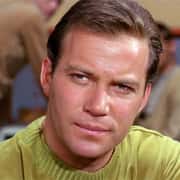
James T. Kirk
Captain James T. Kirk, the iconic protagonist of the Star Trek universe, is a highly innovative and passionate leader who never shies away from taking risks. Known for his unwavering dedication to his crew and the ideals of the United Federation of Planets, Kirk's cunning mind, strategic thinking, and exceptional diplomatic skills set him apart from other Starfleet captains. His ability to think outside the box and make split-second decisions in critical situations solidifies his reputation as one of the most legendary characters in the Star Trek franchise.
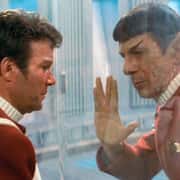
The half-human, half-Vulcan First Officer of the USS Enterprise, Spock represents the epitome of stoicism, logic, and reason. Often struggling with the dichotomy between his Vulcan and human heritage, he brings an unparalleled level of intellect and curiosity to the crew while grappling with his emotions. His unwavering loyalty and deep understanding of both cultures make Spock not only a vital asset to the crew but also a symbol of unity and harmony between two seemingly disparate worlds. His unique upbringing and commitment to logic have made Spock one of the most beloved and enduring characters in the Star Trek universe.

Montgomery Scott
Affectionately known as "Scotty," Montgomery Scott is the brilliant and resourceful Chief Engineer of the USS Enterprise. With his unmistakable Scottish accent, wit, and humor, Scotty consistently saves the day by performing seemingly impossible engineering miracles. His uncanny ability to push the boundaries of the ship's systems, coupled with his unwavering loyalty to Captain Kirk and the rest of the crew, makes him an indispensable member of the Enterprise. Scotty's optimistic attitude and steadfast dedication to his work have endeared him to Star Trek fans throughout the years.
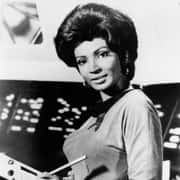
Nyota Uhura
A groundbreaking character for her time, Lieutenant Nyota Uhura serves as the Communications Officer aboard the USS Enterprise. Her linguistic and interpersonal skills play a significant role in fostering understanding between different races and cultures. As one of the first Black women to hold a central role in a major television series, Uhura broke barriers and shattered stereotypes during the height of the Civil Rights Movement. Her poise, intelligence, and strength continue to serve as an inspiration for women and people of color in the science fiction genre and beyond.
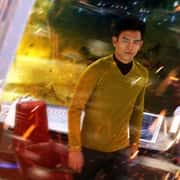
Hikaru Sulu
As the talented Helmsman of the USS Enterprise, Hikaru Sulu is known for his calm demeanor and exceptional piloting abilities. His passion for botany, fencing, and astrophysics showcases his well-rounded personality and diverse interests outside of his Starfleet duties. Sulu's portrayal as a competent Asian character during a time of Hollywood whitewashing broke racial barriers, paving the way for greater representation and diversity onscreen. His quiet confidence, strong moral compass, and ability to navigate complex situations make Sulu a fan favorite and a staple of the Star Trek universe.

Leonard McCoy
Gruff yet compassionate, Dr. Leonard "Bones" McCoy serves as the Enterprise's Chief Medical Officer. A skilled physician with a penchant for metaphors, Bones is often the voice of reason and humanity on the crew, reminding them of the ethical implications of their actions. His tumultuous yet endearing friendship with Spock provides a unique balance between logic and emotion that is rarely seen on television. Despite his grumbles and sharp wit, McCoy's unwavering concern for the wellbeing of his patients and crewmates solidifies him as a beloved and integral character.

Pavel Chekov
The young and enthusiastic Russian navigator of the Enterprise, Ensign Pavel Chekov brings a vibrant energy and eagerness to the crew. With his thick accent and unwavering patriotism, Chekov often serves as comic relief while providing valuable insights and ingenuity in critical situations. His youthful perspective and relentless loyalty to the crew, coupled with his exceptional problem-solving abilities, make him an indispensable and charismatic addition to the Star Trek universe.

Christopher Pike
Captain Christopher Pike, the original captain of the USS Enterprise before James T. Kirk, is a thoughtful and decisive leader with a strong moral compass. Known for his keen ability to judge character and motivate his crew, Pike serves as a mentor and guiding force for the younger members of Starfleet. His willingness to take risks for the greater good and unwavering dedication to the Starfleet ideals set an inspiring precedent for future captains. With his calm demeanor and tactical prowess, Captain Pike remains a revered and influential figure in the Star Trek universe.
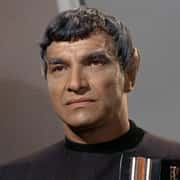
A prominent Vulcan ambassador and Spock's father, Sarek embodies the intellect and stoicism characteristic of his race. Though he struggles with the emotional consequences of marrying a human woman, Amanda Grayson, his commitment to diplomacy and the pursuit of knowledge remains steadfast. Sarek's influence on Spock's upbringing is evident in his son's sense of honor and dedication to reason, making him an essential figure in shaping one of the franchise's most enduring characters. Despite his cool exterior, Sarek's complicated relationship with his family adds depth and complexity to his persona, solidifying his status as a beloved Star Trek character.
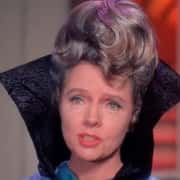
Amanda Grayson
The human wife of Sarek and mother of Spock, Amanda Grayson is a symbol of the potential for unity and understanding between different species and cultures. Her compassion, empathy, and love for her family serve as a powerful contrast to the Vulcan detachment and logic that often surrounds her. Amanda's influence on Spock is evident in his emotional growth throughout the series, as she encourages him to embrace his humanity and become a more well-rounded individual. Her quiet strength and unwavering love for her son make Amanda Grayson an essential and compelling character within the Star Trek universe.
Starfleet Computer
The Starfleet Computer is an indispensable component of the USS Enterprise, providing crucial information and analysis to the crew in their various missions and adventures. Capable of processing vast amounts of data in mere seconds, this advanced artificial intelligence (AI) system exemplifies the technological prowess of the Star Trek universe. With its neutral yet authoritative voice, the Starfleet Computer serves as a reliable source of knowledge and guidance for the crew, often assisting them in navigating complex situations and overcoming challenges. While not a typical character in the traditional sense, the Starfleet Computer is an iconic presence that greatly contributes to the distinctiveness of the franchise.

George Samuel Kirk, Sr.
The father of James T. Kirk, George Samuel Kirk, Sr., plays a pivotal role in shaping his son's character and values, even though his presence in the series is brief. As the First Officer of the USS Kelvin, George demonstrates bravery, self-sacrifice, and dedication to his crew by staying behind during the evacuation to save countless lives, including his wife and newborn son. His heroic actions leave a lasting impression on Kirk, inspiring him to follow in his father's footsteps and join Starfleet. The legacy of George Samuel Kirk establishes a strong foundation for the protagonist's journey, making him a significant figure within the Star Trek canon.
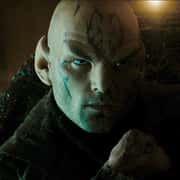
The Romulans, an enigmatic and cunning race, serve as one of the most formidable adversaries in the Star Trek universe. Characterized by their pointed ears, sharp eyebrows, and militaristic society, Romulans are driven by a desire for power and territorial expansion, often employing deception and subterfuge to achieve their goals. Despite their antagonistic role, the complex and nuanced portrayal of individual Romulans, such as Commander Sela and Senator Vreenak, adds depth and intrigue to the franchise. Ultimately, the Romulans represent the darker side of ambition and secrecy, albeit with glimmers of hope for peace and understanding.
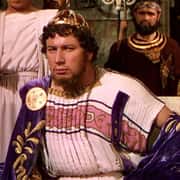
Nero, a Romulan mining ship captain turned vengeful villain in Star Trek (2009) , serves as a testament to the devastating influence of grief and loss on an individual's actions. Driven by the destruction of his home planet and the death of his family, Nero's quest for vengeance against Spock and the Federation leads him down a path of ruthless destruction. His single-minded obsession and disregard for the lives of others makes him a formidable antagonist. However, the emotional backstory underlying his actions also highlights the complexities inherent in all beings, regardless of their race or allegiance.
Nero's wife
Although her presence is brief and mostly in flashbacks, Nero's wife Amandine plays a vital role in the development of Star Trek (2009)'s primary antagonist. Her tragic death during Romulus's destruction serves as the catalyst for her husband's descent into madness and vengeance, fueling his desire to punish the world he sees as responsible. The deep love and devotion Nero feels for his wife are testaments to the character's humanity, providing a glimpse of vulnerability beneath his hardened exterior. As such, Amandine serves as a symbol of the transformative power of love and heartbreak within the Star Trek universe.
Vulcan Bully #1
Appearing in Star Trek (2009) , the character of the Vulcan Bully illustrates the challenges faced by young Spock in his formative years, highlighting his struggle to reconcile his dual heritage. Despite the common perception that Vulcans are solely driven by logic and devoid of emotion, the bullies reveal that even this seemingly stoic race can fall prey to more base instincts such as prejudice and cruelty. The actions of the Vulcan Bully push Spock to explore his human side and ultimately become the multifaceted character we know and love. The presence of this character underscores the complexities that lie beneath the surface of the Vulcan race.
Captain Robau
Though his time onscreen is brief, Captain Richard Robau of the USS Kelvin plays a crucial role in the opening moments of Star Trek (2009) . When faced with the threat of Nero's ship, Captain Robau demonstrates bravery and selflessness by agreeing to leave his crew and board the enemy vessel in an attempt to negotiate peace. His unflinching dedication to his command and willingness to sacrifice himself for the safety of others serve as a prime example of the leadership qualities that define Starfleet captains. Robau's actions set a tone of heroism and duty that resonates throughout the film and the franchise as a whole.
Barracks Leader
The Barracks Leader in Star Trek (2009) serves as an authoritative figure within the Starfleet Academy, responsible for maintaining order and discipline among the cadets. While his role may be minimal, his presence establishes the structured environment and expectations placed upon those training to join the ranks of Starfleet officers. As a supportive figure, the Barracks Leader helps to guide young cadets like James T. Kirk on their paths to becoming the leaders and heroes of the future. His role underscores the importance of mentorship and guidance in the development of the franchise's beloved characters.
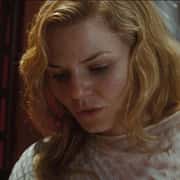
Winona Kirk
As the mother of James T. Kirk, Winona Kirk's influence on her son's life cannot be overstated. In the face of tragedy and loss, Winona demonstrates resilience and courage, raising Kirk and his brother in the aftermath of their father's death. Her strength and fortitude in the face of adversity inspire Kirk's own determination and drive to succeed in Starfleet. Although her appearance in the series is limited, Winona Kirk stands as a testament to the power of maternal love and endurance in shaping the lives of her children.
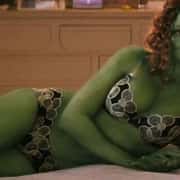
Gaila, an Orion woman attending Starfleet Academy in Star Trek (2009) , is a minor character who adds an element of intrigue to the film. As the roommate of Uhura, Gaila represents the diversity of species and cultures present within the Star Trek universe, particularly within the ranks of Starfleet. Her brief interactions with Kirk and Uhura also serve to showcase her intelligence and ambition, traits essential for success in the demanding environment of the Academy. Gaila's presence, though fleeting, highlights Star Trek's commitment to inclusivity and the celebration of unique individuals from all walks of life.
Admiral Richard Barnett
As the Superintendent of Starfleet Academy, Admiral Richard Barnett serves as an imposing presence and symbol of authority in Star Trek (2009) . His stern demeanor and high expectations for new recruits showcase the level of dedication required for a successful career in Starfleet. Additionally, his ability to recognize potential in cadets, such as Kirk, speaks to his keen understanding of the qualities necessary for leadership. Admiral Barnett's role is essential in reinforcing the discipline, commitment, and determination that define the Star Trek universe's most respected officers.
The Wrong Orion
The Wrong Orion, played by Rachel Nichols in Star Trek (2009), is an intriguing character who serves as an essential catalyst for the film's events, making her one of the best Star Trek characters to date. As the enigmatic and exotic green-skinned beauty, Nichols expertly captures the allure associated with the Orion race. However, she also brings a sense of vulnerability and depth to her character, highlighting the fact that she is more than just a stereotype. The Wrong Orion's presence on-screen not only adds intrigue and excitement to the plot but also challenges our preconceived notions of the Orions, enabling her character to leave an indelible mark on the Star Trek universe.
Ayel, Nero's second-in-command in Star Trek (2009) , serves as a loyal and ruthless supporter of his captain's quest for vengeance. The unwavering devotion he displays toward Nero's cause, even in the face of destruction, speaks to the strong bonds formed among Romulan comrades in their militaristic society. Ayel's fierce fighting skills and cunning tactics make him a dangerous adversary for the Enterprise crew. This character's blind loyalty serves as a stark contrast to the more nuanced relationships and moral compasses exhibited by the protagonists, emphasizing the complexities of friendship and allegiance within the Star Trek universe.
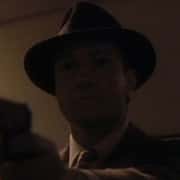
In Star Trek (2009) , Johnny is a childhood friend of James T. Kirk, providing insight into the protagonist's early life and experiences. Growing up in rural Iowa, Johnny's rebellious nature and youthful antics are mirrored by Kirk, offering glimpses of the future captain's defiant spirit and daring attitude. This character serves as a reminder that even legendary figures like Kirk have humble origins, highlighting the potential for growth and development in anyone. Although a minor character, Johnny's role in shaping Kirk's formative years adds depth to the franchise's beloved protagonist.
Kelvin Doctor
The Kelvin Doctor, portrayed by Sonita Henry in Star Trek (2009), is a fantastic character who proves that even small roles can have a significant impact. As the chief medical officer aboard the USS Kelvin, her character represents the compassionate and capable nature of Starfleet medical officers, despite the chaos unfolding around them. Henry's powerful portrayal of the Kelvin Doctor in the opening scenes provides the audience with an incredibly intense and emotional introduction to the rebooted Star Trek universe. This incredible performance cements the Kelvin Doctor as a standout character among the pantheon of Star Trek greats.
The Iowa Cop in Star Trek (2009) represents authority and law on Earth, contrasting with the interstellar focus of most characters in the series. Encountering a young James T. Kirk during one of his more reckless moments, the interaction between the two showcases Kirk's defiance and struggle to find his path in life before joining Starfleet. The Iowa Cop's presence emphasizes the importance of choices and consequences in shaping one's future, a theme that resonates throughout the Star Trek universe. Though a minor character, his brief appearance reminds audiences that even Earth-bound concerns play a role in the larger narrative of the series.
Med Evac Pilot
In Star Trek (2009) , the Med Evac Pilot's role is small but significant, as he helps transport an injured George Samuel Kirk, Sr. to safety. Despite the chaos and uncertainty of their circumstances, the pilot demonstrates courage and professionalism under pressure. His actions contribute to the foundations of the Kirk family saga and the heroics that would define James T. Kirk's life. In the grand tapestry of the Star Trek universe, characters like the Med Evac Pilot emphasize the importance of teamwork and bravery in the face of adversity.
Lew the Bartender
Lew the Bartender, played by the late Jeremy Roberts in Star Trek: Voyager, is a unique addition to the long list of memorable Star Trek personalities. Providing a human touch within the heart of the Delta Quadrant, Lew's character exemplifies the idea that despite being lightyears away from home, some things remain constant - like a friendly face tending the bar. The engaging storytelling nature of his character manages to create a profound connection between the crew and the audience. Through Lew the Bartender's warm demeanor and quick wit, Roberts brings a sense of warmth and familiarity to the otherwise unpredictable and often hostile environment of the Delta Quadrant.
Kelvin Helmsman
Kelvin Helmsman, portrayed by Greg Ellis in Star Trek (2009), is an exceptional character you can't help but appreciate. As the helmsman aboard the USS Kelvin, his character showcases a combination of unwavering loyalty and dedication to duty, even in the face of imminent danger. In what could have been a minor role, Ellis manages to imbue the character with a sense of purpose and skill that makes him stand out among the crew. Furthermore, the Kelvin Helmsman's actions under pressure leave an indelible mark on the audience, reinforcing his position as one of the best Star Trek characters of all time.
Romulan Helmsman
The Romulan Helmsman serves as an integral member of Nero's crew in Star Trek (2009) , expertly navigating the villain's formidable ship through challenging situations. Although not a primary focus of the story, his contributions to Nero's destructive mission hint at the skills and cunning of the Romulan race. As a loyal supporter of his captain's cause, the Romulan Helmsman's role showcases the strength of the bond between comrades in the face of adversity. His presence offers yet another dimension to the complexity and depth of the Star Trek universe.
Burly Cadet #1
The burly cadet in Star Trek (2009) serves as a foil to the protagonist during an intense confrontation at the Starfleet Academy bar. This character's aggression and short temper contrast sharply with the poise and restraint demonstrated by Captain Pike as he intervenes in the situation. The burly cadet's presence highlights the diverse range of personalities that coexist within the Star Trek universe and the challenges faced by those attempting to navigate such a complex social landscape.
Kelvin Alien #2
As a crew member aboard the USS Kelvin in Star Trek (2009) , this unnamed alien character exemplifies the diverse range of species that come together under the banner of Starfleet. Although only a background character, their presence adds to the rich tapestry of cultures that intersect within the Star Trek universe, demonstrating the commitment to inclusion and cooperation that defines the Federation. This alien crew member serves as a reminder of the infinite possibilities and inherent unity of the franchise's vision of the future.
Star Trek: The Original Series
Star Trek: The Original Series (referred to as Star Trek prior to any spin-offs) is the first Star Trek series. The first episode of the show aired on 6 September 1966 on CTV in Canada, followed by a 8 September 1966 airing on NBC in America. The show was created by Gene Roddenberry as a " Wagon Train to the Stars". Star Trek was set in the 23rd century and featured the first three years of the voyages of the starship USS Enterprise under Captain James T. Kirk .
Star Trek was later informally dubbed The Original Series , or TOS, after several spin-offs aired. The show lasted three seasons until canceled in 1969 . When the show first aired on TV, and until lowering budget issues in its third season resulted in a noticeable drop in quality episodes and placed in a 10 pm Friday night death slot by the network, Star Trek regularly performed respectably in its time slot. After it was canceled and went into syndication , however, its popularity exploded. It featured themes such as a Utopian society and racial equality, and the first African-American officer in a recurring role.
Ten years later, Star Trek: The Motion Picture reunited the cast on the big screen aboard a refurbished USS Enterprise . They appeared in five subsequent films, ending with Star Trek VI: The Undiscovered Country in 1991, during production of the spin-off series Star Trek: The Next Generation and shortly before Gene Roddenberry's death. Several original series characters also appeared in the seventh movie, Star Trek Generations , and in other Star Trek productions.
- 1 Opening credits
- 2.1 Starring
- 2.2 Also starring
- 2.3 Co-stars
- 3 Production crew
- 4.1 First pilot
- 4.2 Season 1
- 4.3 Season 2
- 4.4 Season 3
- 5.1 Concept
- 5.2 The first pilot
- 5.3 The second pilot
- 5.4 The series begins
- 5.5 The first season
- 5.6 Syndication
- 5.7 Reception
- 5.8 Remastered
- 6 Related topics
- 8 External links
Opening credits [ ]
- Main Title Theme (Season 2-3) file info (composed by Alexander Courage )
Main cast [ ]
Starring [ ].
- William Shatner as Captain Kirk
Jeffrey Hunter , who portrayed Captain Pike , was the only star listed in the original pilot 's opening credits.
Also starring [ ]
- Leonard Nimoy as Mr. Spock
- DeForest Kelley as Dr. McCoy
DeForest Kelley was listed as a co-star from 1966 through 1967 before appearing in the opening credits as "also starring" from 1967 through 1969 .
Co-stars [ ]
- James Doohan as Scotty
- Nichelle Nichols as Uhura
- George Takei as Sulu
- Walter Koenig as Chekov ( 1967 - 1969 )
- Majel Barrett-Roddenberry as Christine Chapel
- Grace Lee Whitney as Janice Rand
Production crew [ ]
- Gene Roddenberry – Creator, Writer, Producer, Executive Producer
- Gene L. Coon – Writer, Producer
- John Meredyth Lucas – Writer, Producer, Director
- Fred Freiberger – Producer (1968-69)
- Robert H. Justman – Associate Producer (Season 1-2), Co-Producer (Season 3), First Assistant Director (two pilots)
- D.C. Fontana – Writer, Script Consultant (1967-68)
- Steven W. Carabatsos – Writer, Story Consultant (1966)
- John D.F. Black – Associate Producer, Writer, Story Editor (1966)
- Arthur H. Singer – Story Consultant (1968-69)
- Byron Haskin – Associate Producer (first pilot)
- Walter "Matt" Jefferies – Production Designer, Art Director
- William E. Snyder – Director of Photography (first pilot)
- Ernest Haller – Director of Photography (second pilot)
- Jerry Finnerman – Director of Photography (61 episodes, 1966-1968)
- Keith Smith – Director of Photography (1 episode, 1967)
- Al Francis – Director of Photography (16 episodes, 1968-1969), Camera Operator (61 episodes, 1966-1968)
- Jim Rugg – Supervisor of Special Effects
- Rolland M. Brooks – Art Director (34 episodes, 1965-1967)
- Fred B. Phillips – Make-up Artist
- Robert Dawn – Make-up Artist (second pilot)
- William Ware Theiss – Costume Designer
- Gregg Peters – First Assistant Director (Season 1), Unit Production Manager (Season 2-3), Associate Producer (Season 3)
- Claude Binyon, Jr. – Assistant Director (third season)
Episode list [ ]
- List of TOS episodes by airdate
- List of TOS remastered episodes by airdate
First pilot [ ]
Season 1 [ ].
TOS Season 1 , 29 episodes:
Season 2 [ ]
TOS Season 2 , 26 episodes:
Season 3 [ ]
TOS Season 3 , 24 episodes:
Behind the scenes [ ]
Concept [ ].
Star Trek was created by Gene Roddenberry, whose interest in science fiction dated back to the 1940s when he came into contact with Astounding Stories . Roddenberry's first produced science fiction story was The Secret Weapon of 117 , which aired in 1956 on the Chevron Theatre anthology show. By 1963 Roddenberry was producing his first television series, The Lieutenant , at MGM .
In 1963, MGM was of the opinion that "true-to-life" television dramas were becoming less popular and an action-adventure show would be more profitable (this prediction turned out to be right, and led to series such as The Man from U.N.C.L.E ). Roddenberry had already been working on a science fiction concept called Star Trek since 1960 , and when he told MGM about his ideas, they were willing to take a look at them. As the production of The Lieutenant came to an end, Roddenberry delivered his first Star Trek draft to MGM. The studio was, however, not enthusiastic about the concept, and a series was never produced.
Roddenberry tried to sell his " wagon train to the stars " format to several production studios afterward, but to no avail. In 1964 , it was rumored that Desilu was interested in buying a new television series. Desilu was a much smaller company than MGM, but Roddenberry took his chances, greatly aided with the help of Desilu Executive Herb Solow . This led to a three-year deal with Desilu in April 1964 .
The first attempt to sell the Star Trek format to broadcasting network CBS (Desilu had a first proposal deal with the network) failed. CBS chose another science fiction project, Irwin Allen 's more family-oriented Lost in Space instead of Roddenberry's more cerebral approach. But in May 1964 , NBC 's Vice-President of Programming Mort Werner agreed to give Roddenberry the chance to write three story outlines, one of which NBC would select to turn into a pilot.
One of the submitted story lines, dated 29 June 1964 , was an outline for " The Cage ", and this was the story picked up by NBC. Now, the daunting task that Roddenberry and his crew faced was to develop the Star Trek universe from scratch. Roddenberry recruited many people around him to help think up his version of the future. The RAND Corporation's Harvey P. Lynn acted as a scientific consultant, Pato Guzman was hired as art director, with Matt Jefferies as an assisting production designer. This phase of creativity and brainstorming lasted throughout the summer, until in the last week of September 1964 the final draft of the "The Cage" script was delivered to NBC, after which shooting of the pilot was approved.
The first pilot [ ]
In early October, preparations for shooting "The Cage" began. A few changes in the production crew were made: Roddenberry hired Morris Chapnick , who had worked with him on The Lieutenant , as his assistant. Pato Guzman left to return to Chile and was replaced by Franz Bachelin . Matt Jefferies finalized the design for the Enterprise and various props and interiors. By November 1964 , the sets were ready to be constructed on stages Culver Studios Stage 14 , 15 , and 16 . Roddenberry was not happy with the stages, since they had uneven floors and were not soundproof, as Culver Studios had been established in the silent movie era when soundproofing had not been an issue to consider. Eventually, in 1966 , the rest of the series was shot on Paramount stages 9 and 10 , which were in better shape.
Casting of the characters was not a problem, apart from the lead role of Captain Pike (still known as "Captain April " at this point, later renamed "Captain Winter" before finally choosing "Pike") who Roddenberry convinced Jeffrey Hunter to play. Leonard Nimoy ( Spock ) had worked with Roddenberry on The Lieutenant . Majel Barrett , also a familiar face from The Lieutenant , got the part of the ship's female first officer, Number One . Veteran character actor John Hoyt , who had worked on many science fiction and fantasy projects before, was chosen to play the role of Doctor Phil Boyce . Young Peter Duryea and Laurel Goodwin were hired as José Tyler and Yeoman J.M. Colt , respectively. The extras were cast from a diversity of ethnic groups, which was significant because integration was not a usual occurrence in 1960s television, and segregation was still a reality in the United States.
To produce the pilot episode, Robert H. Justman was hired as assistant director; he had worked on The Outer Limits shortly before. Makeup artist Fred Phillips was brought in as well, whose first job it was to create Spock's ears. Another veteran from The Outer Limits was producer-director Byron Haskin , who joined as associate producer. On 27 November 1964 , the first scenes of "The Cage" (or "The Menagerie," as it was briefly known), were shot. Filming was scheduled to be eleven days, however the production went highly over budget and over schedule, resulting in sixteen shooting days and US$164,248 plus expenses.
But there were still a lot of visual effects to be made. An eleven-foot filming model of the USS Enterprise , designed by Matt Jefferies, was built by Richard Datin , Mel Keys , and Vern Sion in Volmer Jensen 's model shop , and was delivered to the Howard Anderson Company on 29 December 1964 .
In February 1965 , the final version of "The Cage" was delivered at NBC and screened in New York City. NBC officials liked the first pilot. Desilu's Herb Solow says that NBC was surprised by how realistic it looked, and that it was "the most fantastic thing we've ever seen." The reason the pilot was rejected was because it was believed that it would attract only a small audience, and they wanted more action and adventure. They also had problems with the "satanic" Spock and the female first officer (Number One). However, NBC was convinced that Star Trek could be made into a television series, and that NBC itself had been at fault for choosing the "The Cage" script from the original three stories pitched. Also, after spending US$630,000 on "The Cage" (the most expensive TV pilot at the time), they didn't want to have their money wasted. NBC then made the unprecedented move to order a second pilot.
The second pilot [ ]
For the second pilot, NBC requested three story outlines again. These were " Where No Man Has Gone Before " by Samuel A. Peeples , and " Mudd's Women " and " The Omega Glory " by Roddenberry. Although it was the most expensive of the three, NBC chose " Where No Man Has Gone Before ", as it had the most action and most outer space spectacle. However, the other two premises were also made into episodes of the series later.
Filming the second pilot began in July 1965 , and took nine days to complete. The entire cast of " The Cage " was replaced except Spock. Jeffrey Hunter chose not to reprise his role as Captain Pike, mostly by the advice of his wife, who felt that "science fiction ruins her husband's career". Roddenberry wanted both Lloyd Bridges and Jack Lord for the role of the new captain, however both declined. Finally William Shatner , who had previous science fiction experience acting in episodes of The Twilight Zone and The Outer Limits , was chosen. The new captain was named James R. Kirk (later renamed James T. Kirk).
For the role of the chief medical officer, Roddenberry chose veteran actor Paul Fix . Canadian actor James Doohan got the role of chief engineer Scott , and young Japanese-American George Takei was featured as ship's physicist Sulu . The latter two reprised their roles in the upcoming series, though Sulu was a helmsman in the series. Other actors considered for being regulars were Lloyd Haynes as communications officer Alden and Andrea Dromm as Yeoman Smith , but neither of them were re-hired after the pilot.
Many of the production staff were replaced. Robert Dawn served as head make-up artist, however Fred Phillips returned to the position in the series itself. Academy Award winner cinematographer Ernest Haller came out of semi-retirement to work as the director of photography. Associate producer Byron Haskin was replaced by Robert H. Justman , who now shared double duties as producer and assistant director.
The Enterprise model was updated for the second pilot, and many new outer space effects shots were made, most of which were reused in the series itself. The sets were also updated a bit, most notably the main bridge and the transporter room. Most of the uniforms, props, and sets were reused from " The Cage ", however some new props (including the never-seen-again phaser rifle ) and a brand new matte painting (the planet Delta Vega ) were made specially for this episode.
" Where No Man Has Gone Before " was accepted by NBC and the first season of a regular series was ordered for broadcasting in the 1966-67 television season. History was made.

The series begins [ ]
Preparation for the first regular season began in early 1966 . All the Enterprise interior sets were updated, as well as the introduction of brand new uniforms. The look of the show became more colorful and more vivid. The Enterprise model was also updated once more. Also, the entire production was moved from Desilu's Culver City studios to the main Gower Street studio's Stage 9 and 10 ( Paramount Stage 31 and 32 from 1967 onward) in Hollywood.
Kirk (Shatner) and Spock (Nimoy) were kept as the series stars, with Grace Lee Whitney joining the two as Yeoman Janice Rand (replacing Andrea Dromm as Yeoman Smith). Whitney had worked with Roddenberry a year before on an unsold pilot titled Police Story . Publicity photos promoting the new series were made at this time, with the three of them, mostly using props left from the two pilots (most notably the aforementioned phaser rifle). Shatner and Nimoy wore their new uniforms on these photographs, while Whitney had to wear an old, pilot version.
Scott (Doohan) and Sulu (Takei) were also kept, the latter becoming the ship's helmsman instead of physicist. Two additions made the Enterprise main crew complete: DeForest Kelley was hired to play the new chief medical officer, Leonard McCoy , as Roddenberry had known him from previous projects, including the aforementioned Police Story . Actress Nichelle Nichols got the role of communications officer Uhura , who became a symbol of the racial and gender diversity of the show. Nichols was a last minute addition, weeks before filming began on the first regular episode.
Jerry Finnerman became the new director of photography, while Fred Phillips, Matt Jefferies, and Rolland M. Brooks returned to their former positions. Writer John D.F. Black was brought in as the second associate producer (next to Justman). While Roddenberry and Black handled the script and story issues, Justman was in charge of the physical aspects of production.
Filming of the first regular episode, " The Corbomite Maneuver " began on 24 May 1966 . Finally Star Trek debuted on NBC with a "Sneak Preview" episode at 8:30 pm (EST) on 8 September 1966 . NBC chose " The Man Trap " (the fifth episode in production order) to air first, mainly because they felt it was more of a "traditional monster story" and featured more action.
The first season [ ]
In August 1966 , several changes were made in the Star Trek production staff. Roddenberry stepped down as line producer and became the executive producer. His replacement was Gene L. Coon , who also regularly contributed to the series as a writer. While Black had also left the series, story editor Steven W. Carabatsos came in, sharing story duties with Roddenberry and Coon. To handle post-production, Edward K. Milkis was brought in by Justman. Carabatsos had left Star Trek near the end of the season, and was replaced by D.C. Fontana , formerly Roddenberry's secretary and a writer for the series.
Syndication [ ]
- See : Syndication
Due to the overall length of the episodes of The Original Series , several minutes of each episode are frequently cut during the show's reruns, notably on the Sci-Fi Channel . Starting in April 2006 , the G4 network began airing the full length episodes in "Uncut Marathons" on Saturdays. G4 stopped airing these full-length versions in November 2006, and has discontinued its run of Star Trek 2.0 , which was a trivia-oriented and interactive version of the show for the viewers.
For current airings see Where to watch .
Reception [ ]
The Original Series has been nominated for and won a number of awards over the years. Some of the awards include:
- The series was nominated for thirteen Emmy Awards during its run, but did not win any.
- It was nominated eight times for the "Best Dramatic Presentation" Hugo Award , sweeping the nominees in 1968. It won twice, and Roddenberry won a special award in 1968.
- The 2003 "Pop Culture Award" in the TV Land Awards .
- The 2005 Saturn Award for "Best DVD Retro Television Release."
Aaron Harberts and James Frain cited TOS as their favorite Star Trek series. ( AT : " O Discovery, Where Art Thou? ")
Remastered [ ]
On 31 August 2006 , CBS Paramount Television announced that, in celebration of the 40th anniversary of Star Trek , the show would return to broadcast syndication for the first time in sixteen years. The series' 79 episodes were digitally remastered with all new visual effects and music. The refurbished episodes have been converted from the original film to high-definition video, making it on par with modern television formats.
Related topics [ ]
- TOS directors
- TOS performers
- TOS recurring characters
- TOS writers
- Character crossover appearances
- Undeveloped TOS episodes
- Desilu Stage 9
- Desilu Stage 10
- Star Trek Writers/Directors Guide
- Star Trek: The Original Series novels
- Star Trek: The Original Series comics (DC)
- Star Trek: The Original Series comics (IDW)
- Star Trek: The Original Series soundtracks
- Star Trek: The Original Series on VHS
- Star Trek: The Original Series on Betamax
- Star Trek: The Original Series on CED
- Star Trek: The Original Series on LaserDisc
- Star Trek: The Original Series on DVD
- Star Trek: The Original Series on Blu-ray
- Star Trek: The Original Series on digital
External links [ ]
- Star Trek: The Original Series at Wikipedia
- Star Trek: The Original Series at Memory Beta , the wiki for licensed Star Trek works
- Star Trek: The Original Series at StarTrek.com
- Star Trek: The Original Series at the Internet Movie Database
- Star Trek: The Original Series at the Movie and TV Wiki
- Public Radio Special: The Peace Message in Star Trek
- 1 USS Enterprise (NCC-1701-G)
- 3 Daniels (Crewman)
Every Star Trek Crew, Ranked

Your changes have been saved
Email is sent
Email has already been sent
Please verify your email address.
You’ve reached your account maximum for followed topics.
10 Best Rick Berman Era Star Trek Episodes, Ranked
Rings of power changed a key aspect of hobbit lore for a good reason, 'it's never pleasant': wednesday writers address jenna ortega's controversial script comments.
September 8, 2023, marked the 57th anniversary of the pilot premiere for Star Trek: The Original Series – an episode that few would have expected to spawn a decades-spanning franchise. Each installation in the Star Trek universe comes complete with an all-new crew (and sometimes familiar faces), and a new ship to traverse the unknown regions of the universe.
Every crew and series brings something fresh to the franchise, adding new stories, filling in rich histories, and offering fans something to look forward to. The Star Trek universe, created by Gene Roddenberry, is very much like our own: ever-expanding, and some of the crews have managed to capture fans' hearts and minds.
RELATED: CBS Studios Announces Release Date for Star Trek: very Short Treks
11 Lower Decks
Lower Decks refuses to follow the Star Trek “formula,” which is for better and for worse. For the fandom, Lower Decks has created breakout star Beckett Mariner, but lacks a strong enough ensemble to truly define the crew. While a great new comedic twist on Star Trek , its light tone means we don’t learn enough about the characters to bond with them truly.
Lower Decks plays its comedy well, often intersecting with other Trek series in one-part crossover, one-part parody. Voyager is the latest victim of this parody, bringing levity to a typically serious franchise.
10 Strange New Worlds
Strange New Worlds has brought a swift and much-needed infusion of optimism to the Star Trek universe, but their reinvention of past characters has weakened their crew. Overall, they need time to grow. The latest portrayals of Spock, Kirk, Uhura, and Pike are excellent and allow for more background for our original crew, but knowing the end makes it difficult to relive the beginning.
For example, knowing Captain Pike’s eventual fate tinges the experience with an air of desperation and sadness. Even Pike himself is made aware of this fate in Star Trek: Discovery , and while his optimism in the face of treachery is noble, many fans do not share that positive outlook.
RELATED: Star Trek's Lost Vulcan: Phase II Almost Replaced Spock With This Character
9 Enterprise
While charming for its era, Star Trek: Enterprise harbors one too many hang-ups in its quest to carve its own path within the Star Trek universe. While there are sweet moments binding the crew together, it often felt more focused on romance than professionalism.
The Chief Engineer of the retro Enterprise , Trip, worked hard to encapsulate the Southern cowboy charm that audiences craved at the time. Also, his surprise rivals-to-lovers romance with by-the-book first officer T'Pol created a remarkable tension previously unseen in earlier Star Trek sagas. The romance was novel and fueled many fans' desires for more romantic subplots, but it dominated the plot too heavily for the crew to advance.
Picard offers something different from other series: a remix of some of our beloved characters, plus new names and faces to grow to love. Picard does an excellent job of reinvigorating old characters while still leaving room for the new to grow, much like a passing of the baton from the older series to the “next generation,” so to speak.
However, the limited number of seasons has left viewers wanting, so the crew hasn’t had the time necessary to rise to a stature held by other notable Star Trek crews. The reintroduction of Seven of Nine and her ability to finally appear on screen has given necessary closure for long-hopeful Voyager fans.
RELATED: Star Trek Is Primed for a Return of These Previously-Hated Aliens
7 Kelvin Timeline
The Kelvin Timeline, also known as the Alternate Original Series (AOS), jump-started the Star Trek franchise and brought it into the 21st century. Between the punchy new dialogue and referential humor, this crew is iconic in how it breathes new life into the characters. However, it does lack originality despite excellent performances by (at the time) up-and-coming actors.
A film is often only as good as its villain, and The Kelvin Timeline uses the most dangerous villain of all in only the second film. While a great way to avoid the sophomore slump, it means that any perils faced by the crew following Khan will pale in comparison, limiting the crew's ability to prove themselves.
6 Discovery
Despite featuring the (arguably) most brilliant captain in the Star Trek universe, Michael Burnham, Discovery ’s serialized nature simply does not lend itself to deep dives into the crew’s relationships with one another. Further, the crew turnover rate (who’s captain at this point, anyway?) makes it difficult for viewers to get that ensemble feeling that other crews provide.
Now that Discovery has paved the way for its contemporary Strange New Worlds , it is no longer bursting at the seams with characters. This breathing room (along with a break from the war with the Klingons) has brought the crew closer together, allowing fans to really get to know who is at the helm of the titular ship.
RELATED: Paramount's DMCA Claim Against Fan-Made Star Trek Project Is a Huge Mistake
5 The Next Generation
Star Trek: The Next Generation featured a rock star crew, each so individually outstanding that viewers wondered why promotions weren't handed out left and right. Each character works so well on their own it’s difficult to have an episode that focuses on more than one character at a time. The character-driven narrative represents the best of Star Trek , just not necessarily the best crew.
The Next Generation was the first crew to arrive on the scene after The Original Series , with an almost 20-year gap between the two debuts. The Shakespearean skills of Sir Patrick Stewart as Captain Picard mixed surprisingly well with the sci-fi setting, elevating the genre to new heights. The simple chemistry between actors brought this crew to life for new and old viewers alike.
There’s nothing quite like getting stranded decades from home to bring a crew together. The Voyager crew is best known for their ingenuity. However, they also deserve their flowers for allowing the journey to bring them together rather than lead to a Lord of the Flies situation. However, this unification came primarily due to the strong leadership of Captain Kathryn Janeway.
Captain Janeway, the fearless leader, is known for her ability to make tough decisions-- even when faced with lizard offspring or the merged consciousness of her first officer and chef. Despite Voyager 's occasionally goofy storylines, the simple endurance of the crew (without promotions!) easily puts them on top.
3 Original Series
Star Trek: The Original Series ' crew has served as the kernel that keeps fans returning to the franchise, hoping to see similar magic across newer entries. Even today, many of the newer crews have tried to replicate the magic of The Original Series . Its jaunty adventures and forward-thinking political messaging have made Star Trek the refuge for underserved populations.
The Original Series marks the pivotal kiss between Black actress Nichelle Nichols (Lieutenant Uhura) and white actor William Shatner (Captain Kirk). This was one of the first interracial kisses on television, coming less than a year after the landmark court case Loving v. Virginia . Even in the worst instances of bad costumes or stilted dialogue, the original series delivered something that fans can't get enough of.
RELATED: Star Trek: Discovery Broke the Franchise Mold in a Way No One Talks About
2 Honorable Mentions
Star trek: prodigy.
The ragtag group of adventurers comprising Star Trek: Prodigy doesn’t completely count as a crew, given their outlier status, but what they lack in Starfleet affiliation, they more than make up for in charm.
Star Trek: The Animated Series
This retro romp takes our Original Series crew and animates their latest adventures. Considered canon only by some, the Animated Series was the first to translate Star Trek into a bold new medium. Featuring the iconic (and controversial) "Kirk is a Jerk" slogan, loved by fans and hated by William Shatner, The Animated Series is a fun twist on the original crew.
1 Deep Space Nine
Deep Space Nine is the blueprint for all crews. Not only did they work together to win a literal war against the formidable Dominion, but they were all friends with one another. The crew felt like a family, sometimes even being too close to one another (Doctor Bashir, for example). Despite their varying allegiances, Deep Space Nine ’s crew knew the true definition of loyalty.
While other crews become divided among the lines of (alien) race and Starfleet allegiance, the mixed crowd of Deep Space Nine changed how Star Trek operates. Rather than taking a utopian or dystopic view of the world, Deep Space Nine took the world as it is, continuing the important political work of Star Trek .
Star Trek Movies in order

1. Star Trek: The Motion Picture

2. Star Trek II: The Wrath of Khan

3. Star Trek III: The Search for Spock

4. Star Trek IV: The Voyage Home

5. Star Trek V: The Final Frontier

6. Star Trek VI: The Undiscovered Country

7. Star Trek: Generations

8. Star Trek: First Contact

9. Star Trek: Insurrection

10. Star Trek: Nemesis

11. Star Trek

12. Star Trek Into Darkness

13. Star Trek Beyond
More to explore, recently viewed.
Star Trek movies in order: Chronological and release
Number One, show me a list of all the Star Trek movies in order — both chronological and release — engage!
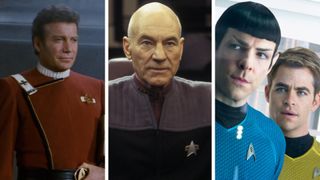
- Chronological order
- Prime Timeline
The Original Series movies
The next generation movies.
- Kelvin Timeline
- Release order
Upcoming Star Trek movies
Raise shields, red alert — we’re going to try and put all the Star Trek movies in order. And we do mean try.
When they were focused on the Original Series era, the Star Trek movies were so easy to watch in order — the movies were numbered, everything was nice and simple. Then Picard comes in with his Next Generation buddies and suddenly numbers are out, subtitles are in. And that’s before we get all the time travel shenanigans that gave birth to the Kelvin timeline , an alternative timeline that splits off from the main canon.
It's been a long while since we've had a new Star Trek movie, with the last release — Star Trek Beyond — coming out back in 2016. Over eight years! Voyager got home from the Delta Quadrant in less time than that! Mercifully the drought is nearly over, with the Discovery spin-off movie Star Trek: Section 31 due to launch in early 2025.
So while we wait for Trek's silver screen return, we’re going to break down the various timelines and help you watch the Star Trek movies in either chronological or release order —- the Temporal Prime Directive be damned. Oh and we’re not making any judgements on the quality of the movies here, so head over to our Star Trek movies ranked list if you want to fight about whether the Kirk or Picard era movies are better.
All of the Star Trek movies are available to watch on Paramount+, along with almost all the shows — check our Star Trek streaming guide to find which nebulas the exceptions are hiding in.
Star Trek movies: Chronological order
Below is the quick version of our list if you just need to check something to win an argument, but it comes with a lot of in-universe time travel-related caveats that we'll explain below.
- Star Trek: The Motion Picture
- Star Trek II: The Wrath of Khan
- Star Trek III: The Search for Spock
- Star Trek IV: The Voyage Home
- Star Trek V: The Final Frontier
- Star Trek VI: The Undiscovered Country
- Star Trek: Generations
- Star Trek: First Contact
- Star Trek: Insurrection
- Star Trek: Nemesis
- Star Trek Into Darkness
- Star Trek Beyond
Star Trek: Prime Timeline
The first thing you need to know about the Star Trek films is that while they travel back and forth in time, they also diverge into two (for now) different timelines. The films of the original crew (well, the first iteration of them, anyway – more on that later) are all in what is known as the Prime Timeline.
Within the Prime Timeline, the movies are then split between The Original Series movies and The Next Generation movies.
1. Star Trek: The Motion Picture
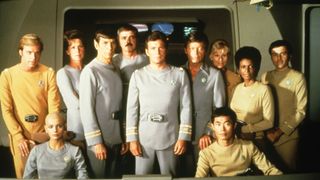
- Release date: December 8, 1979
- Cast: William Shatner, Leonard Nimoy, DeForest Kelley
This is the film that brought the voyages of the U.S.S. Enterprise to the big screen. An energy cloud is making its way toward Earth, destroying everything in its path. Kirk and crew intercept it and discover an ancient NASA probe at the heart of the cloud. Voyager – known as V’ger now – encountered a planet of living machines, learned all it could, and returned home to report its findings, only to find no one who knew how to answer. It’s a slow-paced film, and the costumes are about as 70s as they come, but there’s classic Star Trek at the heart of this film.
2. Star Trek II: The Wrath of Khan
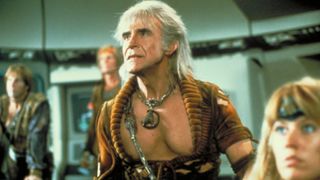
- Release date: June 4, 1982
- Cast: William Shatner, Leonard Nimoy, Ricardo Montalban
Ask a Star Trek fan what the best Star Trek movie is and more often than not, you’ll get Khan as your answer. A sequel to the events of the “Space Seed” episode of The Original Series, Khan is a retelling of Moby Dick with Khan throwing reason to the wind as he hunts his nemesis, James T. Kirk. Montalban delivers a pitch-perfect performance, giving us a Khan with charisma and obsession in equal parts.
3. Star Trek III: The Search for Spock
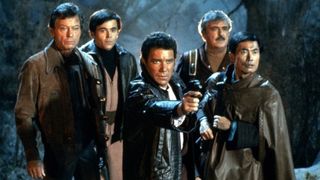
- Release date: June 1, 1984
Spock might have died in The Wrath of Khan, but this third entry set up the premise for his return, with the creation of the Genesis planet. Essentially a heist movie in reverse, Search for Spock has the crew defying orders from Starfleet in an attempt to reunite Spock’s consciousness with his newly-rejuvenated body. It’s not a great movie, but it does include two very important events: the rebirth of Spock and the death of Kirk’s son at the hands of the Klingons. That’ll be important a few flicks from now.
4. Star Trek IV: The Voyage Home
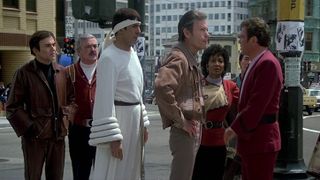
- Release date: November 26, 1986
- Cast: William Shatner, Leonard Nimoy, Catherine Hicks
If Star Trek fans don’t say Khan is the best Star Trek movie, odds are very high they say Voyage Home is. It’s a funny film where the mission isn’t destruction, but creation – or more accurately, repairing the devastating effects of humankind’s ecological short-sightedness.
A probe arrives at Earth, knocking out the power of everything in its path as it looks for someone to respond to its message (yeah, it happens a lot). This time, however, the intended recipient is the long-extinct blue whale. To save Earth, Kirk and co. go back in time to 1980s San Francisco to snag some blue whales. The eco-messaging isn’t exactly subtle, but it doesn’t get in the way of a highly enjoyable movie.
5. Star Trek V: The Final Frontier

- Release date: June 9, 1989
A writers’ strike and Shatner’s directorial skills (or lack thereof) doomed this film before a single scene was shot. The core plot is actually pretty good: Spock’s half-brother hijacks the Enterprise so that he can meet God, which he believes to be… himself. Some Star Trek fans have an odd fondness for this movie, as it showcases the camaraderie of Kirk, Spock, and McCoy when they’re off-duty.
6. Star Trek VI: The Undiscovered Country

- Release date: December 6, 1991
- Cast: William Shatner, Leonard Nimoy, Christopher Plummer
Right, so if that Star Trek fan you’ve been talking to doesn’t choose either Khan or Voyage Home as the best Star Trek movie ever, they almost certainly name Undiscovered Country (and if they don’t, they have highly questionable taste, frankly). The Klingon moon of Praxis explodes, putting the entire Klingon race at risk. The Enterprise hosts a diplomatic entourage of Klingons, much to Kirk’s discomfort.
Remember how Klingons murdered Kirk’s son? Well, he certainly hasn’t forgotten. Kirk’s lingering rage makes him the perfect patsy for the murder of the Klingon Chancellor, sending him and McCoy to a prison planet and setting the stage for war. Christopher Plummer is perfection as a Shakespeare-quoting Klingon general with no taste for peace.
7. Star Trek: Generations

- Release date: November 18, 1994
- Cast: Patrick Stewart, Jonathan Frakes, Brent Spiner
And thus the torch is passed from the crew of The Original Series to that of The Next Generation. It’s a bit of a fumble, to be honest, but they all did their best to get Kirk and Picard into the same film and have it make sense. Malcolm McDowell plays Soran, a scientist who will stop at nothing to control the Nexus, a giant space rainbow that exists outside of space-time.
Soran lost his family when his home world was destroyed and he wants to re-join them (or at least an illusion of them) in the Nexus. He’s not so much a villain as a tragic figure, but the Nexus makes a meeting between Kirk and Picard possible. Not all that sensible, but possible.
8. Star Trek: First Contact
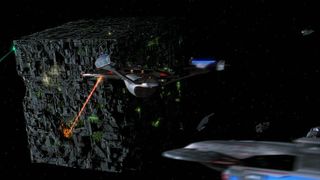
- Release date: November 22, 1996
- Cast: Patrick Stewart, Brent Spiner, Alice Krige
Okay, no, for real, if your Star Trek pal didn’t pick Khan or Voyage Home or… oh, nevermind. Cueing off the iconic two-part episode “Best of Both Worlds,” in which Picard is assimilated by the Borg, First Contact sees the collective traveling back in time in order to disrupt First Contact, the day Earth’s first foray into space attracted the attention of the Vulcans, kicking off the events that would eventually lead to Starfleet’s victory over the Borg. The Borg Queen torments Picard with visions of the past and tempts Data with humanity, going so far as to give him some human skin.
The fight with the Borg aboard the Enterprise is thrilling, and the work on the surface to get first contact back on track is fun. Plus, there’s just nothing like Patrick Stewart turning it up to 11 as he lashes out at the enemy that haunts his dreams.
9. Star Trek: Insurrection

- Release date: December 11, 1998
- Cast: Patrick Stewart, Jonathan Frakes, F. Murray Abraham
Essentially an episode inflated for the big screen, Insurrection is about the Federation conspiring to displace a planet’s population in order to harvest the planet’s unique resource – super healing metaphasic particles. In addition to the rejuvenating natural resource, the Ba’ku also have access to exceptional technology, which they shun in favor of a more simple lifestyle.
Data malfunctions, the villains are Federation allies (and former Ba’ku!), Picard gets to knock boots with a local – Insurrection is the very definition of “fine.” Chronologically, Insurrection is relevant for rekindling the romance between Riker and Troi, but not much else.
10. Star Trek: Nemesis
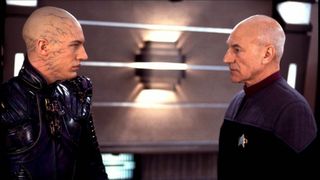
- Release date: December 13, 2002
- Cast: Patrick Stewart, Brent Spiner, Tom Hardy
Before he mumbled his way into our hearts as Bane, Tom Hardy was Shinzon, a clone of Picard the Romulans created in an eventually abandoned attempt to infiltrate Starfleet. Shinzon is dying, and all that will save him is a transfusion of Picard’s blood. Unfortunately, Shinzon also happens to be a megalomaniac who happens to want to destroy all life on Earth and maybe a few other planets, too, if he’s feeling saucy.
Nemesis is notable mostly for killing Data with a noble sacrifice, only to resurrect him moments later in a duplicate body found earlier by the Enterprise crew.
Star Trek: Kelvin Timeline
The last of the Prime Timeline movies failed to impress at the box office, so it was a few years before anyone tried to bring the Enterprise back to the big screen. Rather than lean on any of the TV crews, this new slate of movies would serve as a reboot, welcoming new audiences while honoring long-time fans. Welcome to the Kelvin Timeline. (For all the ins and outs, check out our Star Trek: Kelvin Timeline explained article).
11. Star Trek
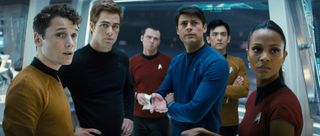
- Release date: May 8, 2009
- Cast: Chris Pine, Zachary Quinto, Karl Urban
Back to the beginning! Star Trek introduces us to James T. Kirk, Spock, and “Bones” McCoy as they meet and join the crew of the U.S.S. Enterprise. Though the plot is a relatively straightforward affair of a Romulan named Nero trying to destroy the Earth. His anger borne out of grief, what matters most is how it all came to be. In the future, Spock – the Prime Timeline version – tries to save Romulus from being destroyed by a supernova, but fails. Both his ship and Nero’s are kicked back in time, setting off a chain of events that diverge from the original, “true” timeline.
The name “Kelvin” refers to the U.S.S. Kelvin, the ship heroically captained by Kirk’s father, which is destroyed in the opening moments of the movie.
12. Star Trek Into Darkness

- Release date: May 16, 2013
- Cast: Chris Pine, Zachary Quinto, Benedict Cumberbatch
The benefit of the Kelvin Timeline is that it not only allows Star Trek to explore canon material – such as Khan (he of the Wrath) – but to do something completely new with it. Khan features heavily in Into Darkness, but he has no beef with Kirk. Instead, a Starfleet Admiral is threatening the lives of Khan’s crew, forcing them to craft weapons of mass destruction.
Khan inevitably eludes captivity and strikes out against Starfleet, killing Captain Pike (and a bunch of others) in the process. Kirk and company eventually take Khan down, but not before Kirk sacrifices himself to save his crew. Don’t worry, these things don’t last in either Star Trek timeline, as Kirk gets better moments later thanks to *checks notes* Khan's super blood.
13. Star Trek Beyond
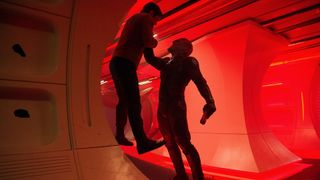
- Release date: July 22, 2016
- Cast: Chris Pine, Zachary Quinto, Idris Elba
Beyond leans into the camaraderie of Kirk, Spock, and McCoy now that they’ve had some time together, much to the movie’s benefit. The Enterprise is lured to Altamid under false pretenses, leading to much of the crew being marooned on the planet. The architect of the deception was Krall, who wants an opportunity to return to a galaxy where war is the order of the day.
Beyond is a significant point in the timeline for two reasons. First, it sadly marked the death of Spock Prime due to the passing of Leonard Nimoy. Second, it culminates in the Enterprise embarking on the five-year-mission that started everything back in 1966.
Star Trek movies: Release order
If you can't be bothered remembering two different orders for the Star Trek movies then we've got good news for you — the release order is identical to the chronological order that we've shown above (accounting for the Kelvin timeline as it's own entity anyway).
Star Trek 4

The full run of Star Trek films currently tops out at 13 entries; the fate of the 14th was hidden within a nebula of conflicting information. “Star Trek 4” was slated for December 22, 2023, but given that filming had yet to begin as of July 2022, it seems inevitable that date will change. Back in February 2022, Paramount that the principal cast would be returning for the fourth installment of the Kelvin timeline, a claim quickly disputed by the agents of those selfsame actors. Awkward.
Soon after, however, Chris Pine eventually signed on the dotted line, and his shipmates reached their own agreements. As of right now, Kirk (Pine), Spock (Zachary Quinto), McCoy (Karl Urban, assuming he can make it work around filming of The Boys), Scotty (Simon Pegg), Uhura (Zoe Saldaña), and Sulu (John Cho) are all ready to beam up and get filming. Sadly, this will be the first of the Kelvin films to not feature Anton Yelchin as Pavel Chekov. Yelchin died in an accident at his home in 2016. It’s currently unclear if Chekov will be recast or if a different character will take his place on the bridge of the Enterprise.
Though the Kelvin timeline is often referred to as “J.J. Abrams Trek,” he won’t be directing Star Trek 4; Matt Shakman will take on that responsibility, leaving Abrams to produce. As for what it will be about, that’s anyone’s guess, but Chris Pine told Deadline he hopes this one tells a smaller story that appeals to the core Trek audience. “Let’s make the movie for the people that love this group of people, that love this story, that love Star Trek,” he said. “Let’s make it for them and then, if people want to come to the party, great.” It’s a strategy that makes sense; the disappointment with recent Trek films hasn’t been their content so much as their box office. A Trek film with a smaller scope (and budget) would almost certainly have a very healthy profit margin while also resonating with the fanbase.
With no new announcements coming from San Diego Comic-Con 2022, it seems that we’ll have to wait for any more insight into the next Star Trek film. Sill, recent comments from Paramount CEO Brian Robbins have us cautiously optimistic: “We’re deep into [Star Trek 4] with J.J. Abrams, and it feels like we’re getting close to the starting line and excited about where we’re going creatively,” he told Variety .
Still, recent comments from Paramount CEO Brian Robbins have us cautiously optimistic: “We’re deep into [Star Trek 4] with J.J. Abrams, and it feels like we’re getting close to the starting line and excited about where we’re going creatively,” he told Variety.
Since then, there hasn’t been much in the way of updates, which leaves us with the worrying prospect of Star Trek 4 being stuck in development hell. During a 2023 appearance at the 57-Year Mission convention in Las Vegas (reported by TrekMovie ), Zachary Quinto explained that creative differences were the cause of the numerous delays.
“I think there’s a lot of other stuff, creative things. It’s complicated. The fact that anything good gets made is kind of a miracle. I think it’s about different people having different agendas and ideas about what it will be.“
Star Trek: Section 31
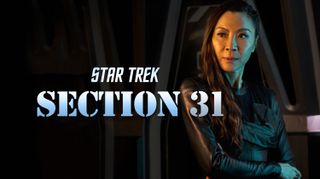
In the meantime, we are getting the Star Trek: Section 31 movie staring Academy Award-winning actress MichelIe Yeoh. She is reprising her role as Emperor Philip Georgiou, her character from Star Trek Discovery (well one of them anyway, mirror universes and all that). This spin-off from the TV series is coming out of warp in early 2025.
Check out our guide to Everything we know about Star trek Section 31 for more info on the upcoming movie.
Join our Space Forums to keep talking space on the latest missions, night sky and more! And if you have a news tip, correction or comment, let us know at: [email protected].
Get the Space.com Newsletter
Breaking space news, the latest updates on rocket launches, skywatching events and more!
Susan Arendt is a freelance writer, editor, and consultant living in Burleson, TX. She's a huge sci-fi TV and movie buff, and will talk your Vulcan ears off about Star Trek. You can find more of her work at Wired, IGN, Polygon, or look for her on Twitter: @SusanArendt. Be prepared to see too many pictures of her dogs.
This Week In Space podcast: Episode 127 — Space Stations Inc.
The best 60s sci-fi movies
SpaceX launches 21 Starlink satellites from California's Vandenberg Space Force Base, lands rocket (video)
Most Popular
- 2 Black hole or neutron star? Gravitational wave 'chirps' can tell us what becomes of dying stars
- 3 Polaris Dawn astronaut plays 'Star Wars' song in music video beamed from space (video)
- 4 Japan's ispace will launch its 2nd lunar lander to the moon in December
- 5 Boeing’s Starliner astronauts speak publicly today for 1st time in 2 months: Watch it live

IMAGES
VIDEO
COMMENTS
Starfleet ranks were identifying titles of rank for the officers and enlisted members of Starfleet denoting the chain of command under both United Earth and the United Federation of Planets. These titles were generally adapted from earlier Earth naval forces. (TOS: "The City on the Edge of Forever", ENT: "Storm Front") By the development of the NX-Alpha in 2143, the Starfleet rank structure ...
Star Trek Glossary: Every Starfleet Rank And Job Explained. Paramount. By Witney Seibold May 6, 2024 11:00 am EST. "Star Trek" is, first and foremost, a workplace drama. It just so happens that ...
The basic structure of Starfleet is very similar to that of the US and Royal Navy, with the high seas being swapped for the stars of deep space. A promotion in Star Trek is usually a reward for exceptional performance, with many Starfleet officers being promoted in response to the valor and bravery demonstrated in the line of duty.
Voyager (Seasons 4-6) Enrique Munoz. Deep Space Nine (Seasons 4-5) While officers attend Starfleet Academy, the rank-and-file personnel attend the 24th-century equivalent of boot camp. They become the anonymous crew working in the background, performing the countless tiny tasks required to keep a starship running.
This page is a list of characters played by the regular cast from the Star Trek series and films. Characters listed by rank or title, at first appearance (or earliest known appearance holding a rank or title) Civilians Wesley Crusher Quark Jake Sisko Neelix Kes Seven of Nine Phlox Captain James T. Kirk Jean-Luc Picard Kathryn Janeway Jonathan Archer Gabriel Lorca Christopher Pike Carol Freeman ...
ENTERPRISE NX-01 PERSONNEL & RANKS. The crew compliment onboard the Enterprise NX-01 is kept to a minimum due to space and storage limitations. long-term operations outside the fleet's normal support structure. To facilitate this, the vessel's personnel needs. have been broken down into three divisions; Command, Science and Engineering.
William Shatner as James T. Kirk, commanding officer of the USS Enterprise. Majel Barrett as Christine Chapel, medical officer. James Doohan as Montgomery Scott, chief engineer. DeForest Kelley as Leonard McCoy, chief medical officer. Nichelle Nichols as Uhura, communications officer. Leonard Nimoy as Spock, first officer and science officer.
Title Date(s) Medium TC "The Cage" (Star Trek: The Original Series) 1966: TV TOS: Star Trek: The Original Series: 1966-1969: TV TAS: Star Trek: The Animated Series: 1973-1974: TV TMP: ... Star Trek has an ongoing tradition of actors returning to reprise their roles in other spin-off series. In some instances, actors have portrayed potential ...
Logo for the first Star Trek film, Star Trek: The Motion Picture (1979). Star Trek is an American science fiction media franchise that started with a television series (simply called Star Trek but now referred to as Star Trek: The Original Series) created by Gene Roddenberry.The series was first broadcast from 1966 to 1969. Since then, the Star Trek canon has expanded to include many other ...
Star Trek is an American science fiction television series created by Gene Roddenberry that follows the adventures of the starship USS Enterprise (NCC-1701) and its crew. It acquired the retronym of Star Trek: The Original Series (TOS) to distinguish the show within the media franchise that it began. [3]The show is set in the Milky Way galaxy, c. 2266-2269.
Star Trek (TV Series 1966-1969) cast and crew credits, including actors, actresses, directors, writers and more. Menu. Movies. ... titles and opticals: Anderson / titles & opticals: Van der Veer Photo Effects (64 episodes, 1966-1969)
Star Trek: Created by Gene Roddenberry. With Leonard Nimoy, William Shatner, DeForest Kelley, Nichelle Nichols. In the 23rd Century, Captain James T. Kirk and the crew of the U.S.S. Enterprise explore the galaxy and defend the United Federation of Planets.
Riker - First officer. Data - Second officer and science officer. LaForge - Chief Engineer (originally, helmsman) Worf - Security Chief, (originally tactical. Also handles the equivalent duties of a communications officer, which they don't technically have in the 24th century). Yar - Original Security Chief, deceased.
Star Trek (2009) cast and crew credits, including actors, actresses, directors, writers and more. Menu. ... a list of 35 titles created 21 Dec 2021 Star Trek Ranked a list of 27 titles created 22 Sep 2022 Watched in 2024 a list of 27 titles created 8 months ago ...
Captain James T. Kirk, the iconic protagonist of the Star Trek universe, is a highly innovative and passionate leader who never shies away from taking risks. Known for his unwavering dedication to his crew and the ideals of the United Federation of Planets, Kirk's cunning mind, strategic thinking, and exceptional diplomatic skills set him apart from other Starfleet captains.
Star Trek: The Original Series (referred to as Star Trek prior to any spin-offs) is the first Star Trek series. The first episode of the show aired on 6 September 1966 on CTV in Canada, followed by a 8 September 1966 airing on NBC in America. The show was created by Gene Roddenberry as a "Wagon Train to the Stars". Star Trek was set in the 23rd century and featured the first three years of the ...
Star Trek: Strange New Worlds: Created by Akiva Goldsman, Alex Kurtzman, Jenny Lumet. With Anson Mount, Ethan Peck, Christina Chong, Melissa Navia. A prequel to Star Trek: The Original Series, the show follows the crew of the USS Enterprise under Captain Christopher Pike.
Every Star Trek Crew, Ranked. September 8, 2023, marked the 57th anniversary of the pilot premiere for Star Trek: The Original Series - an episode that few would have expected to spawn a decades-spanning franchise. Each installation in the Star Trek universe comes complete with an all-new crew (and sometimes familiar faces), and a new ship to ...
Star Trek: The Next Generation: Created by Gene Roddenberry. With Patrick Stewart, Jonathan Frakes, LeVar Burton, Marina Sirtis. Set almost 100 years after Captain Kirk's 5-year mission, a new generation of Starfleet officers sets off in the U.S.S. Enterprise-D on its own mission to go where no one has gone before.
Star Trek was created by American writer and producer Gene Roddenberry and chronicles the exploits of the crew of the starship USS Enterprise, whose five-year mission is to explore space and, as stated in the title sequence, "to seek out new life and new civilizations, to boldly go where no man has gone before." The series takes place in the 23rd century, after a benign and advanced alien ...
Create a new list. List your movie, TV & celebrity picks. 1. Star Trek: The Motion Picture. When an alien spacecraft of enormous power is spotted approaching Earth, Admiral James T. Kirk resumes command of the overhauled USS Enterprise in order to intercept it. 2. Star Trek II: The Wrath of Khan. With the assistance of the Enterprise crew ...
2. Star Trek II: The Wrath of Khan. (Image credit: Paramount Pictures) Release date: June 4, 1982. Cast: William Shatner, Leonard Nimoy, Ricardo Montalban. Ask a Star Trek fan what the best Star ...
Logo for the first Star Trek series, now known as The Original Series. Star Trek is an American science fiction media franchise that started with a television series (simply called Star Trek but now referred to as Star Trek: The Original Series) created by Gene Roddenberry.The series was first broadcast from 1966 to 1969 on NBC.Since then, the Star Trek canon has expanded to include many other ...
Star Trek is an American science fiction media franchise created by Gene Roddenberry, which began with the eponymous 1960s television series and became a worldwide pop-culture phenomenon.Since its creation, the franchise has expanded into various films, television series, video games, novels, and comic books, and it has become one of the most recognizable and highest-grossing media franchises ...